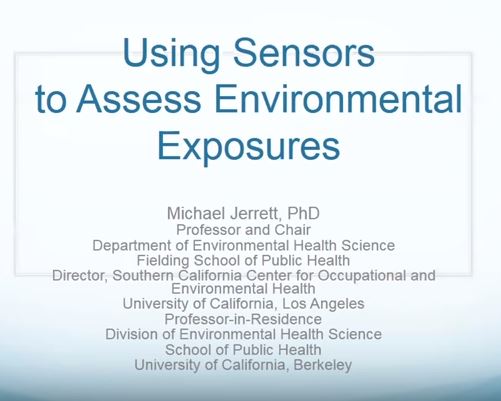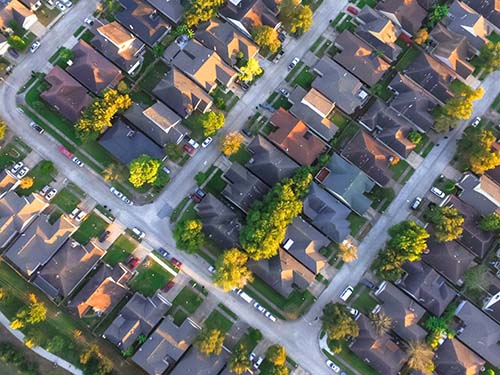We are hard at work on finalizing six new datasets: check out our latest newsletter for more details.
Continue readingGSC Spring Meeting Webinar
CANUE member Dr. Michael Jerrett presents at the National Academies of Sciences Engineering and Medicine – Geographical Sciences Committee Meeting, May 2018.
Continue readingMay 21 | 2018
Kernel Density Estimation as a Measure of Environmental Exposure Related to Insulin Resistance in Breast Cancer Survivors
Marta M. Jankowska, Loki Natarajan, Suneeta Godbole, Kristin Meseck, Dorothy D. Sears, Ruth E. Patterson and Jacqueline Kerr
Cancer Epidemiol Biomarkers Prev; 26(7); 1078–84. Published July 2017
DOI: 10.1158/1055-9965.EPI-16-0927
Continue readingMay 14 | 2018
Environmental noise pollution and risk of preeclampsia.
Auger N, Duplaix M, Bilodeau-Bertrand M, Lo E, Smargiassi A.
Environ Pollut. 2018 Apr 25;239:599-606. Doi. 10.1016/j.envpol.2018.04.060
Abstract
BACKGROUND:
Environmental noise exposure is associated with a greater risk of hypertension, but the link with preeclampsia, a hypertensive disorder of pregnancy, is unclear.
OBJECTIVES:
We sought to determine the relationship between environmental noise pollution and risk of preeclampsia during pregnancy.
METHODS:
We analyzed a population-based cohort comprising 269,263 deliveries on the island of Montreal, Canada between 2000 and 2013. We obtained total environmental noise pollution measurements (LAeq24, Lden, Lnight) from land use regression models, and assigned noise levels to each woman based on the residential postal code. We computed odds ratios (OR) and 95% confidence intervals (CI) for the association of noise with preeclampsia in mixed logistic regression models with participants as a random effect, and adjusted for air pollution, neighbourhood walkability, maternal age, parity, multiple pregnancy, comorbidity, socioeconomic deprivation, and year of delivery. We assessed whether noise exposure was more strongly associated with severe or early onset preeclampsia than mild or late onset preeclampsia.
RESULTS:
Prevalence of preeclampsia was higher for women exposed to elevated environmental noise pollution levels (LAeq24h ≥ 65 dB(A) = 37.9 per 1000 vs. <50 dB(A) = 27.9 per 1000). Compared with 50 dB(A), an LAeq24h of 65.0 dB(A) was not significantly associated the risk of preeclampsia (OR 1.09, 95% CI 0.99-1.20). Associations were however present with severe (OR 1.29, 95% CI 1.09-1.54) and early onset (OR 1.71, 95% CI 1.20-2.43) preeclampsia, with results consistent across all noise indicators. The associations were much weaker or absent for mild and late preeclampsia.
CONCLUSIONS:
Environmental noise pollution may be a novel risk factor for pregnancy-related hypertension, particularly more severe variants of preeclampsia.
Urban Green and Built Infrastructure as a Tool to Mitigate Local Air Pollution | April 10 | 2018 | VIDEO AVAILABLE
 For his presentation, Dr. Baldauf will summarize the U.S. EPA’s research program on the use of built and green infrastructure to mitigate local air pollution impacts from transportation facilities. His presentation will describe the current scientific understanding of how urban infrastructure affects local air quality, including a review of projects conducted in the US and other parts of the world investigating solid noise barrier and roadside vegetation impacts in particular. He will also summarize existing resources developed by the U.S. EPA to assist environmental and health professionals, urban planners, and developers to identify best practices to mitigate local air pollution impacts and avoid unintended consequences where urban infrastructure may exacerbate local air quality concerns.
For his presentation, Dr. Baldauf will summarize the U.S. EPA’s research program on the use of built and green infrastructure to mitigate local air pollution impacts from transportation facilities. His presentation will describe the current scientific understanding of how urban infrastructure affects local air quality, including a review of projects conducted in the US and other parts of the world investigating solid noise barrier and roadside vegetation impacts in particular. He will also summarize existing resources developed by the U.S. EPA to assist environmental and health professionals, urban planners, and developers to identify best practices to mitigate local air pollution impacts and avoid unintended consequences where urban infrastructure may exacerbate local air quality concerns.
 Dr. Baldauf has over 20 years of experience conducting research on emissions, air quality impacts, and adverse health effects from exposures to air pollution emitted by transportation and industrial sources. His research focuses on the development of policies and practices to mitigate air pollution emissions and impacts at local, urban, and global scales. His research has led to national emissions standards and best practices to mitigate air pollution impacts using urban development including built and green infrastructure. He has a joint affiliation with the U.S. Environmental Protection Agency’s Office of Research & Development and the Office of Transportation & Air Quality where he has led cross-disciplinary research teams focusing on air quality measurements, air dispersion modeling, and sustainable transportation and urban development issues. He also maintains Adjunct Professor appointments in the School of Engineering at North Carolina State University and Texas A&M University. Dr. Baldauf co-manages the U.S. EPA’s Mobile Source Emissions Research Laboratory and led the cross-agency Sustainable Transportation Initiative. He has published over 100 peer-review journal articles and several book chapters on these topics during his career at the U.S. EPA.
Dr. Baldauf has over 20 years of experience conducting research on emissions, air quality impacts, and adverse health effects from exposures to air pollution emitted by transportation and industrial sources. His research focuses on the development of policies and practices to mitigate air pollution emissions and impacts at local, urban, and global scales. His research has led to national emissions standards and best practices to mitigate air pollution impacts using urban development including built and green infrastructure. He has a joint affiliation with the U.S. Environmental Protection Agency’s Office of Research & Development and the Office of Transportation & Air Quality where he has led cross-disciplinary research teams focusing on air quality measurements, air dispersion modeling, and sustainable transportation and urban development issues. He also maintains Adjunct Professor appointments in the School of Engineering at North Carolina State University and Texas A&M University. Dr. Baldauf co-manages the U.S. EPA’s Mobile Source Emissions Research Laboratory and led the cross-agency Sustainable Transportation Initiative. He has published over 100 peer-review journal articles and several book chapters on these topics during his career at the U.S. EPA.


